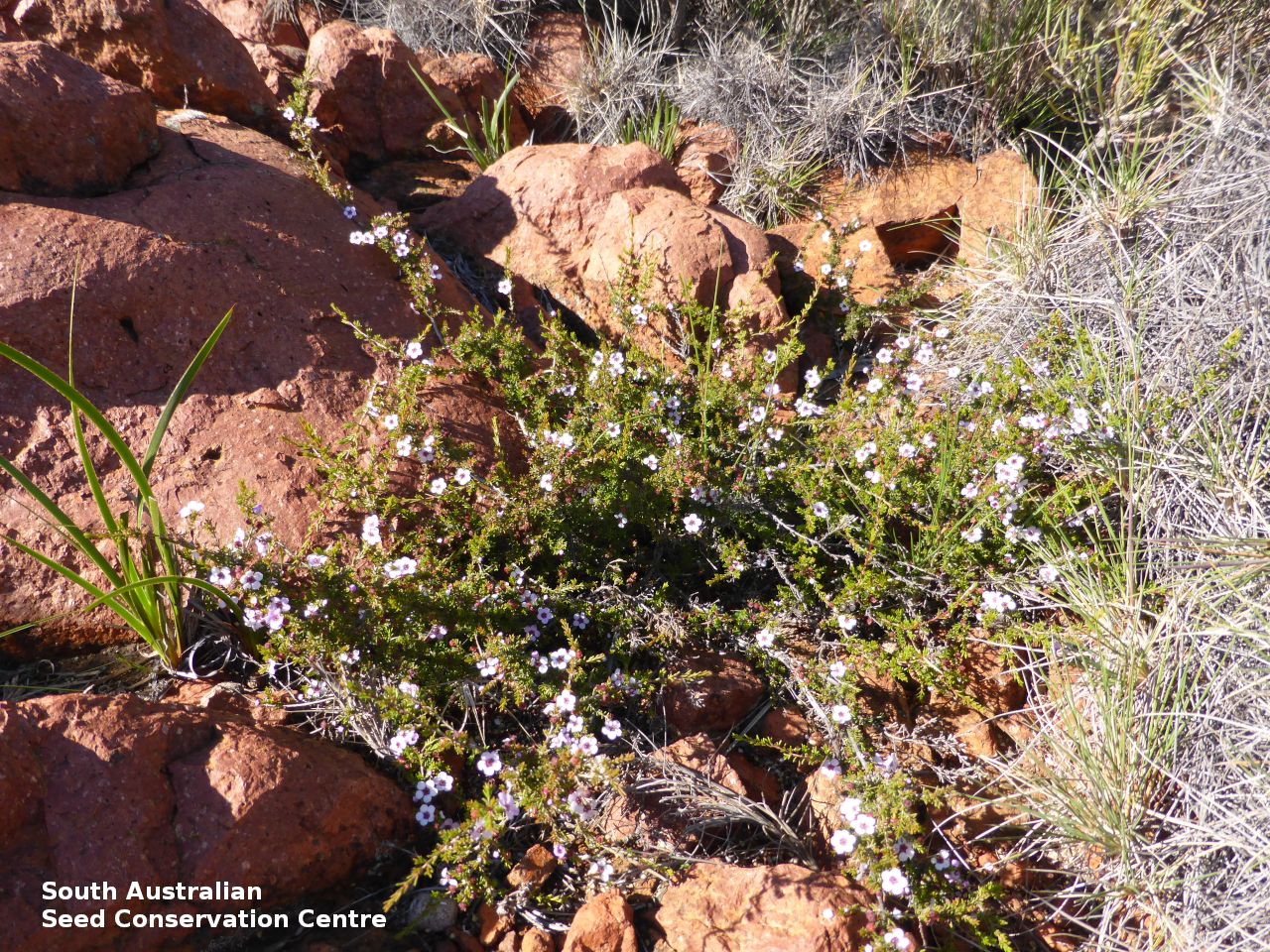
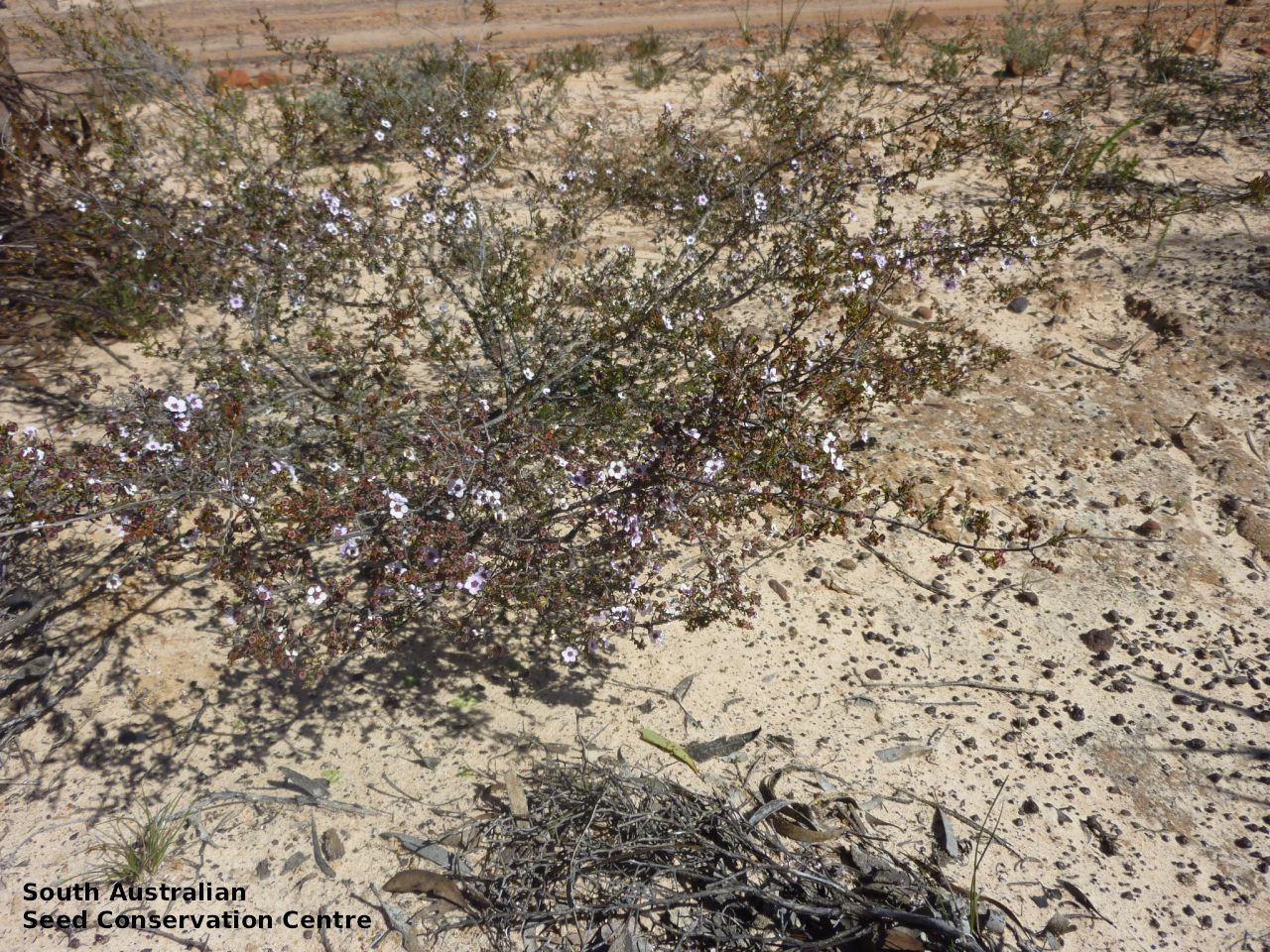
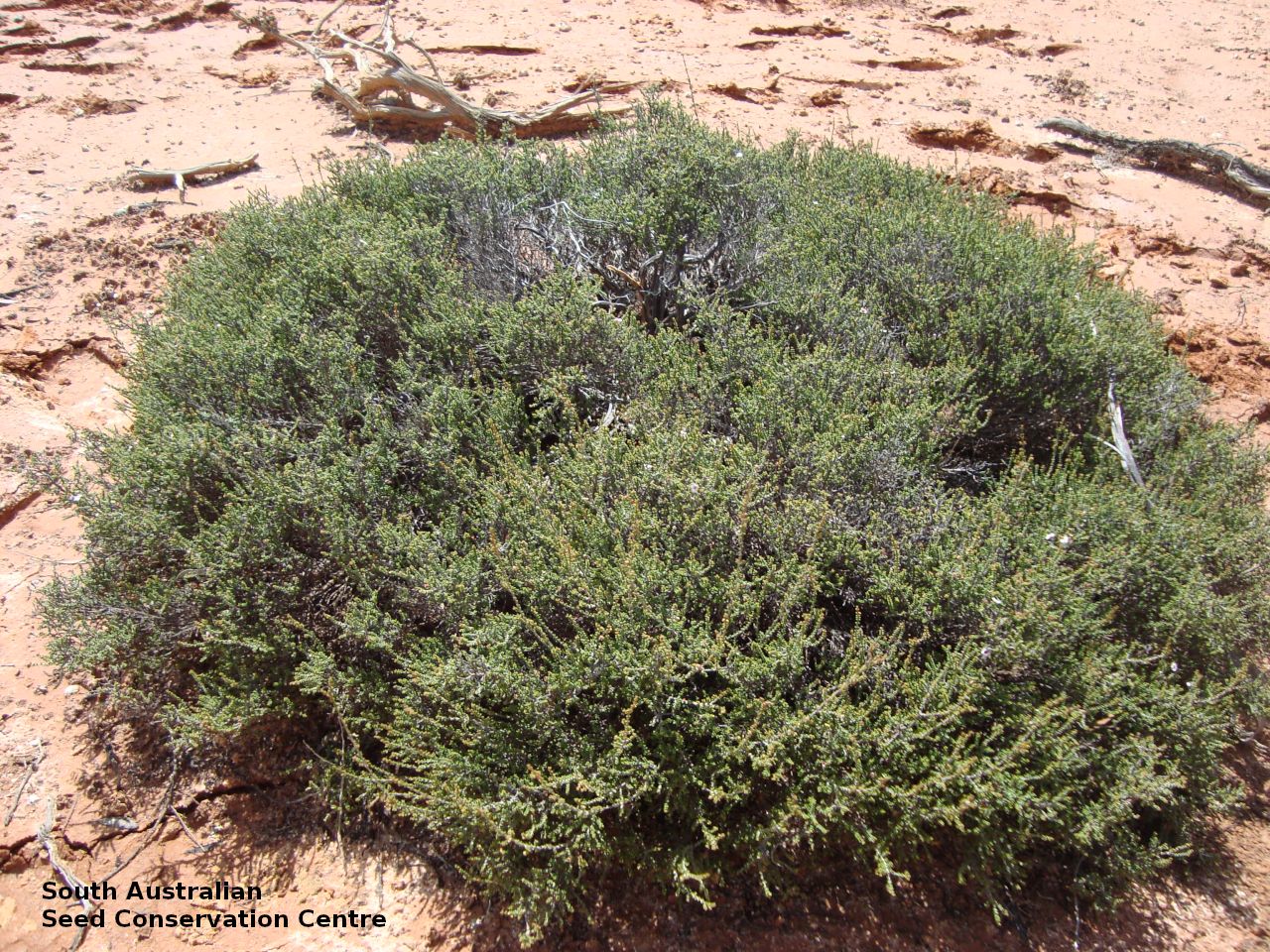
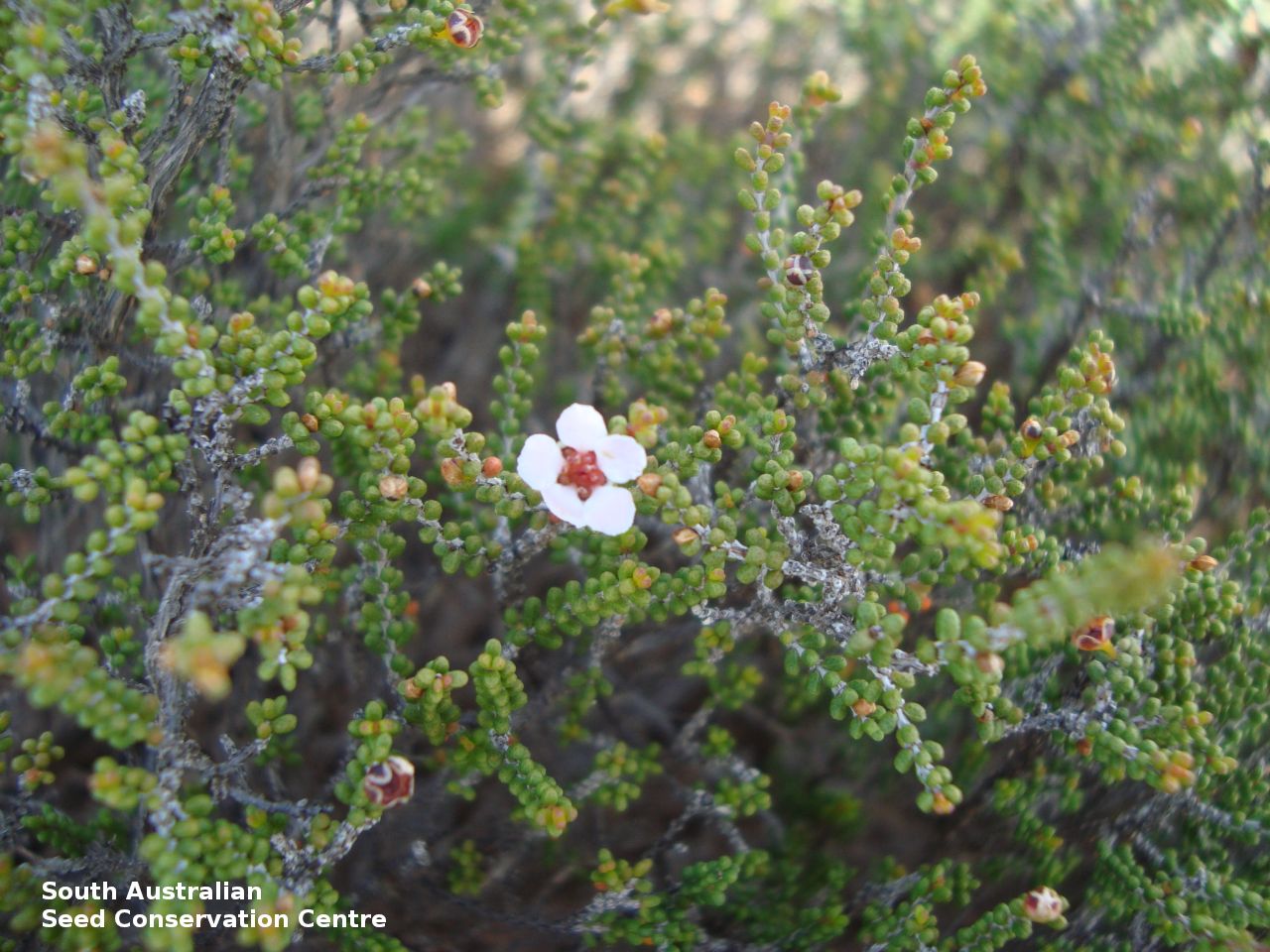
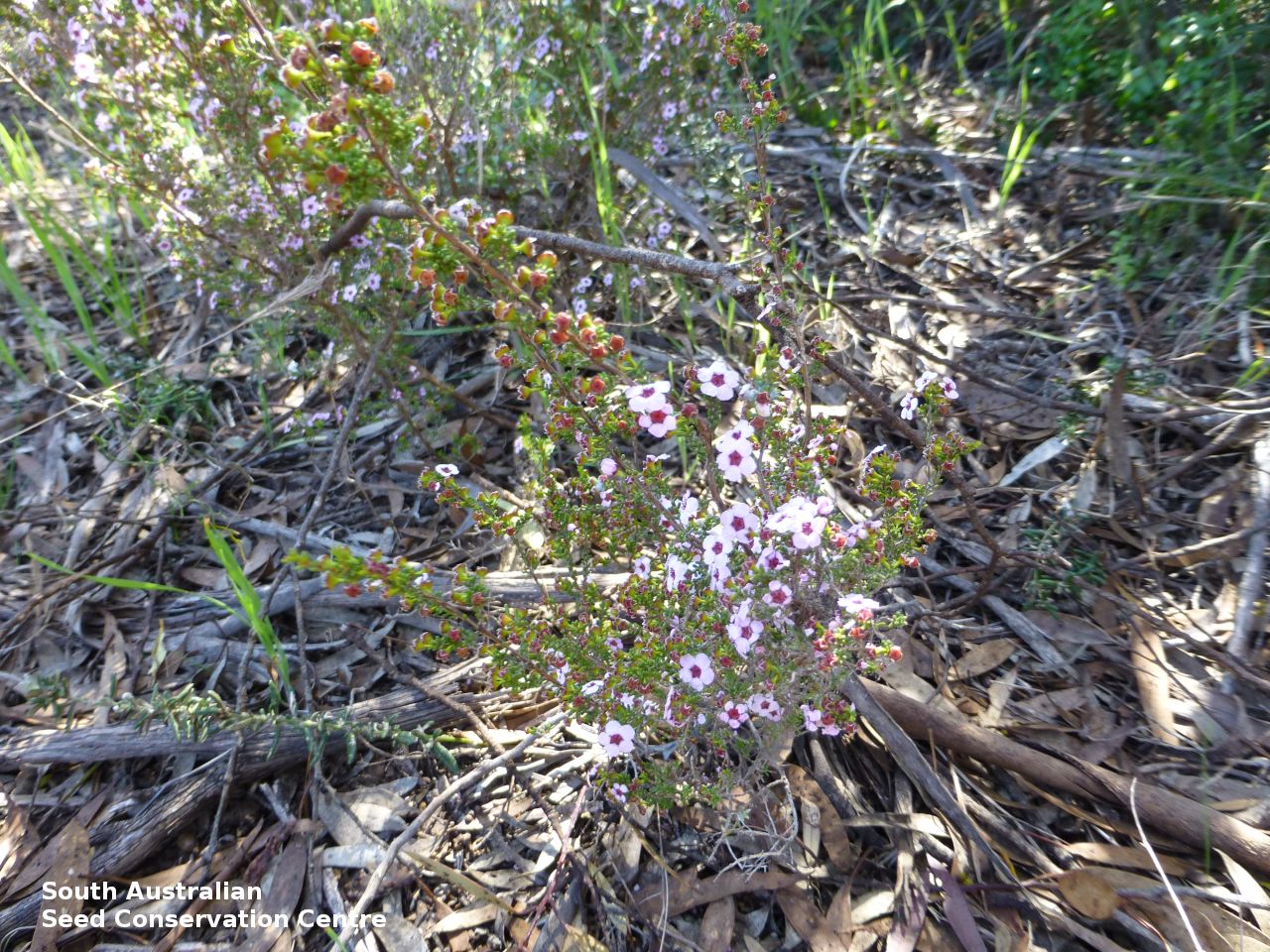
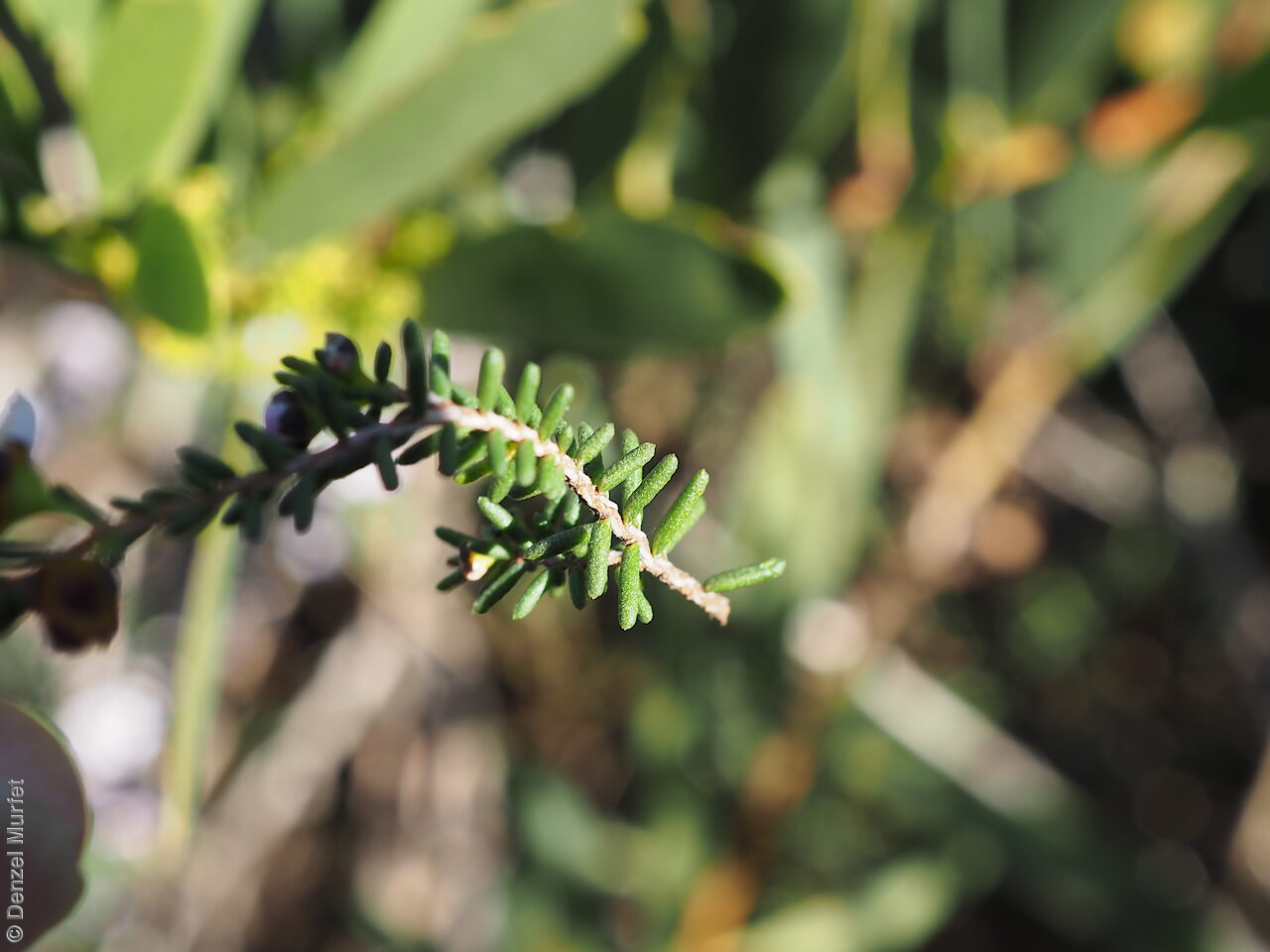
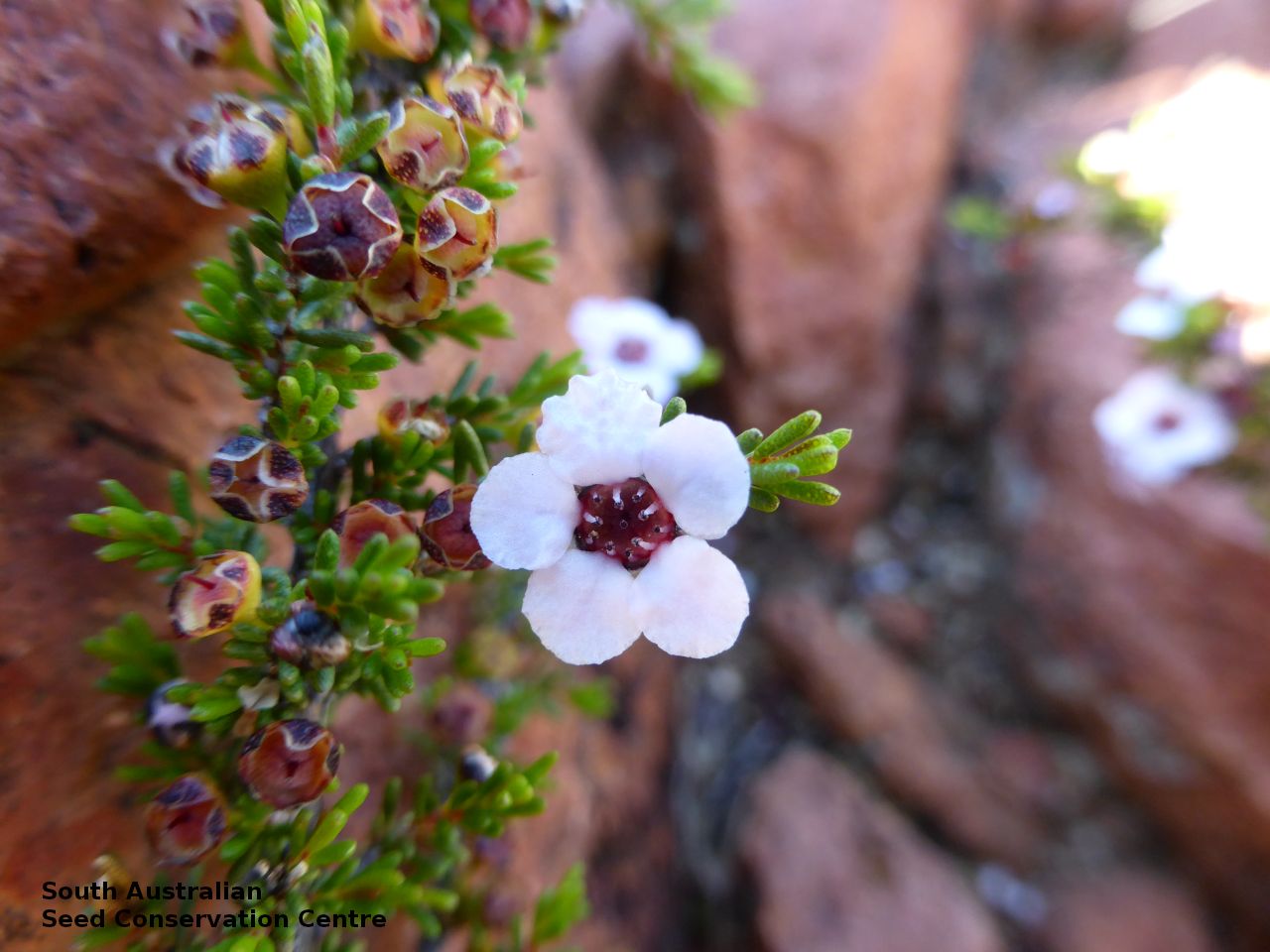
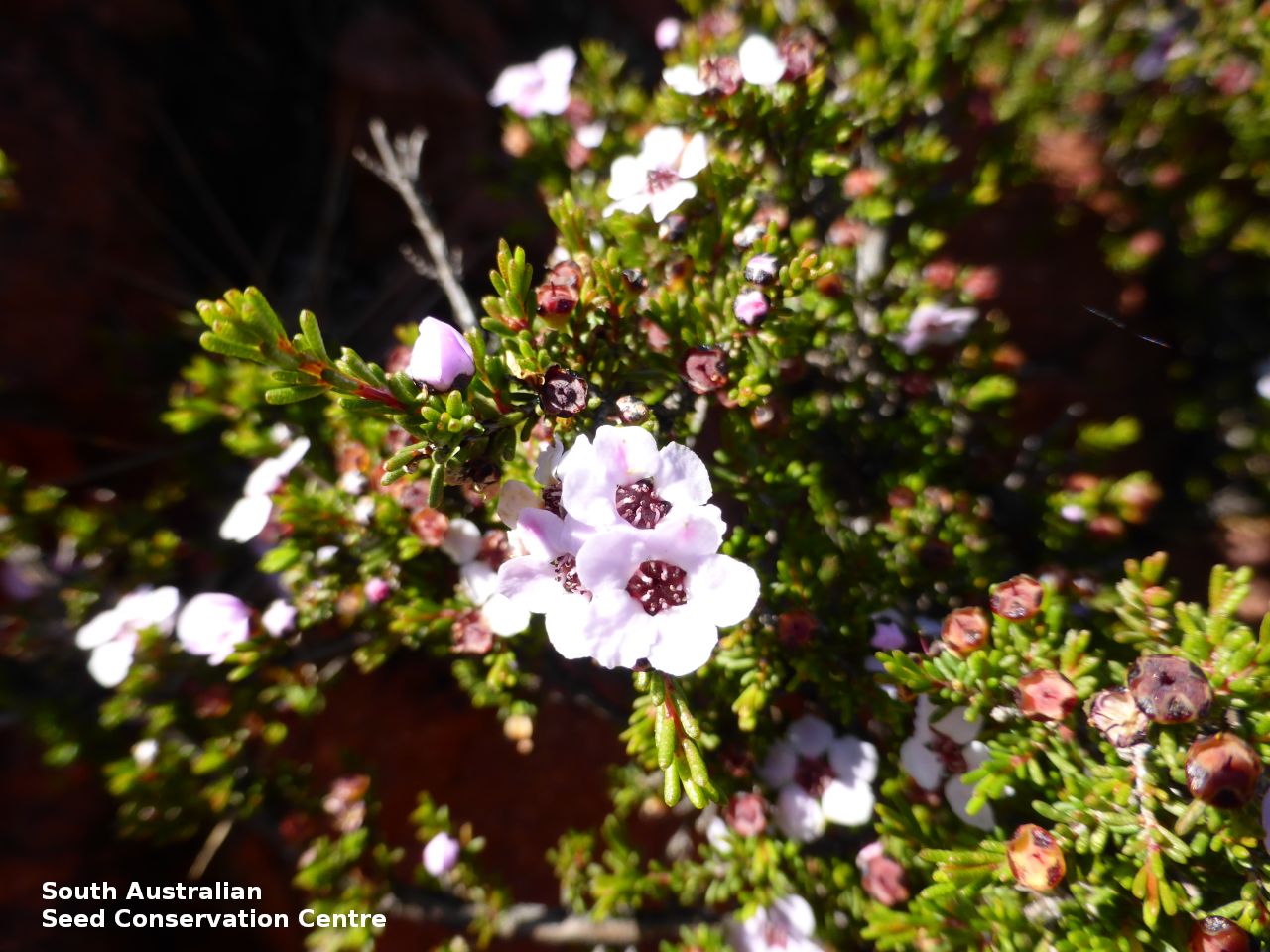
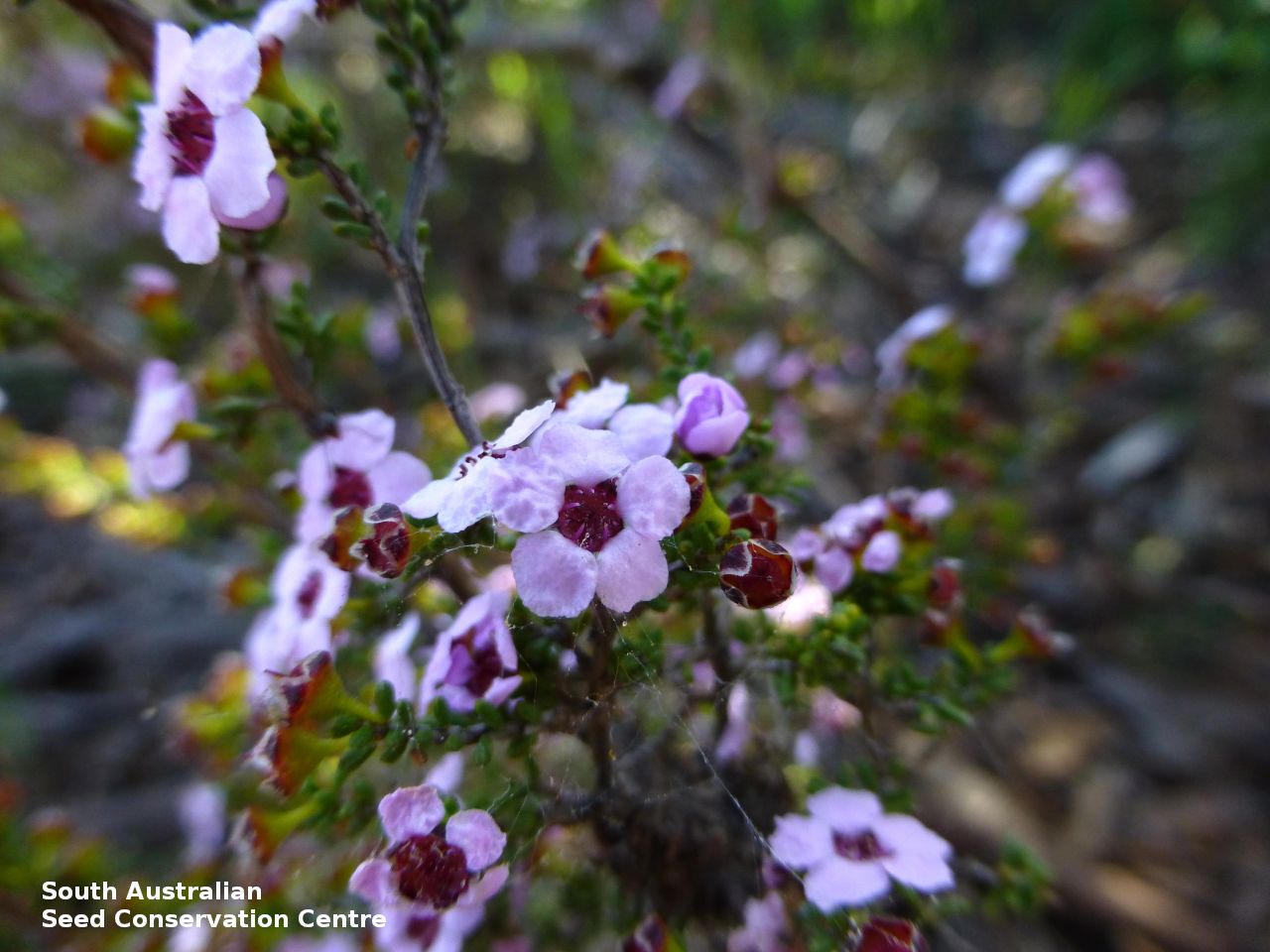
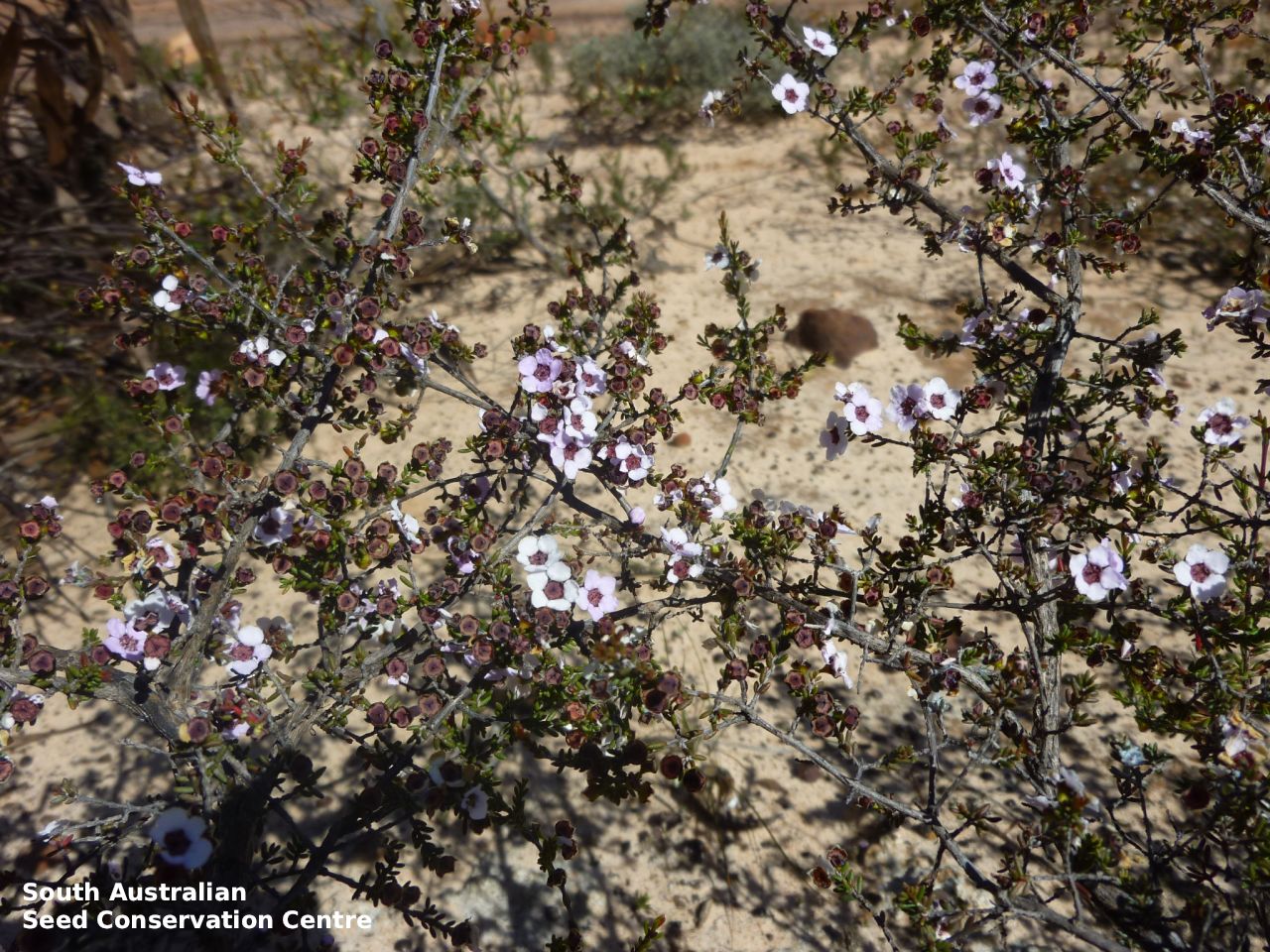
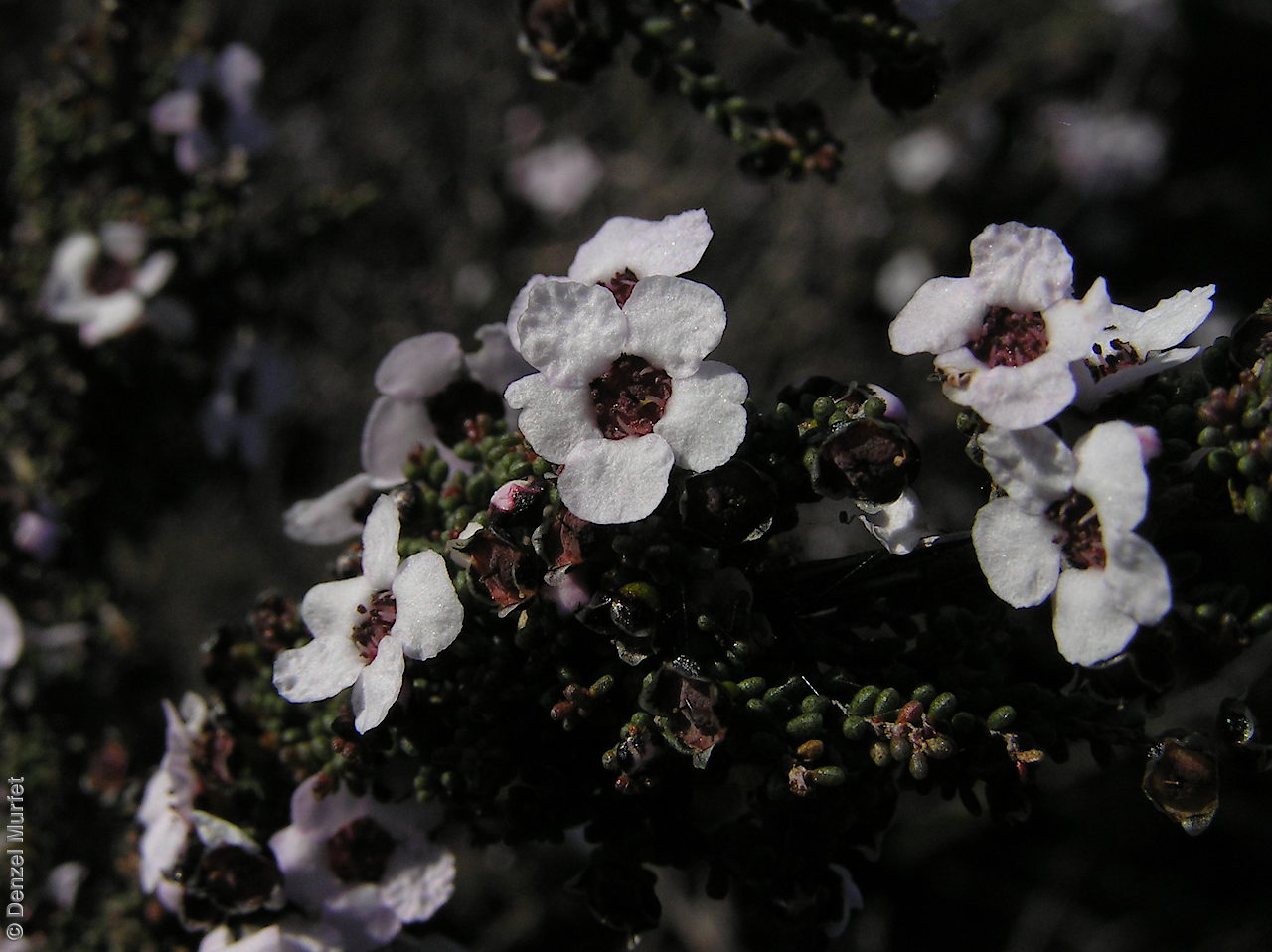
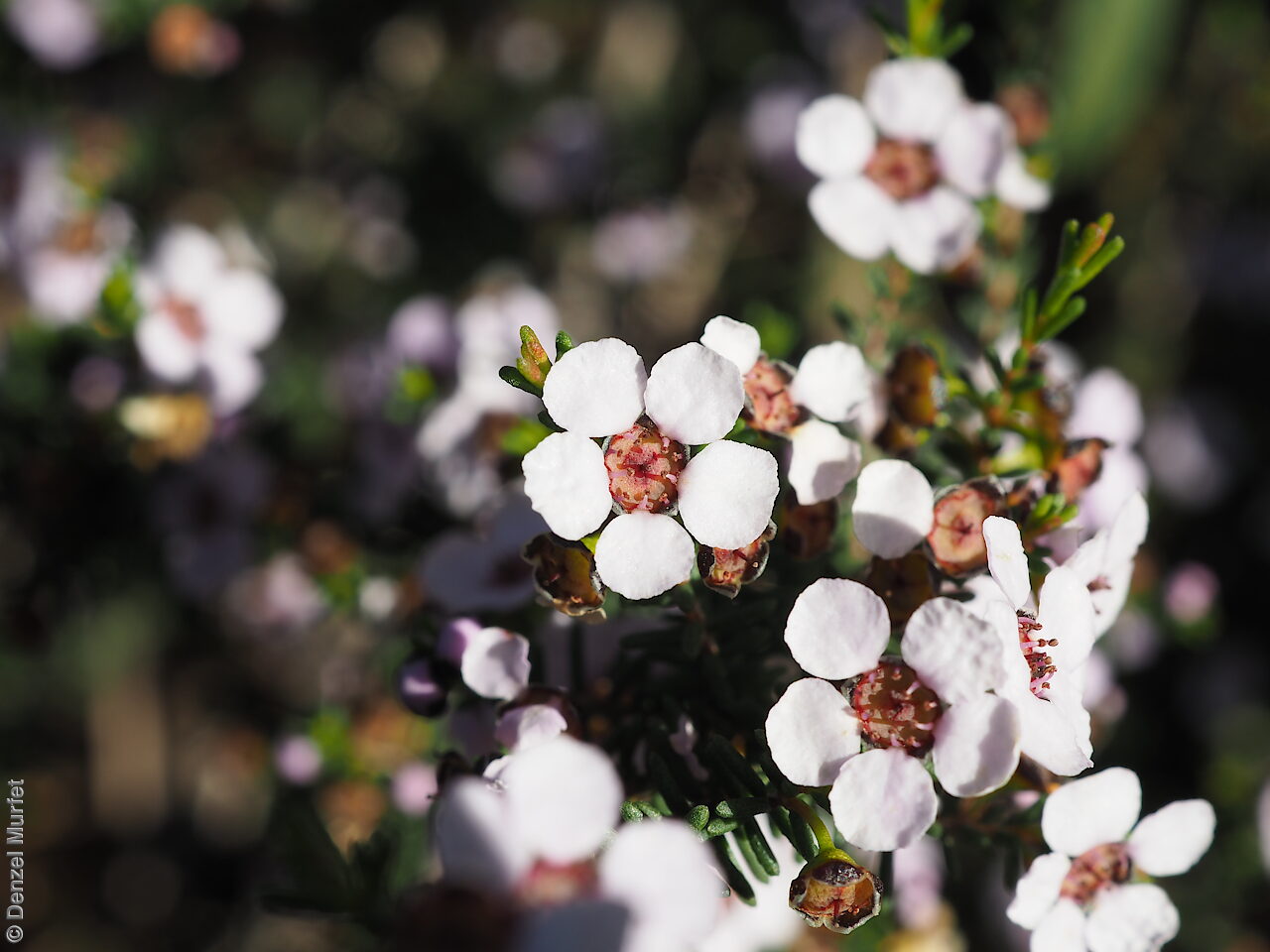
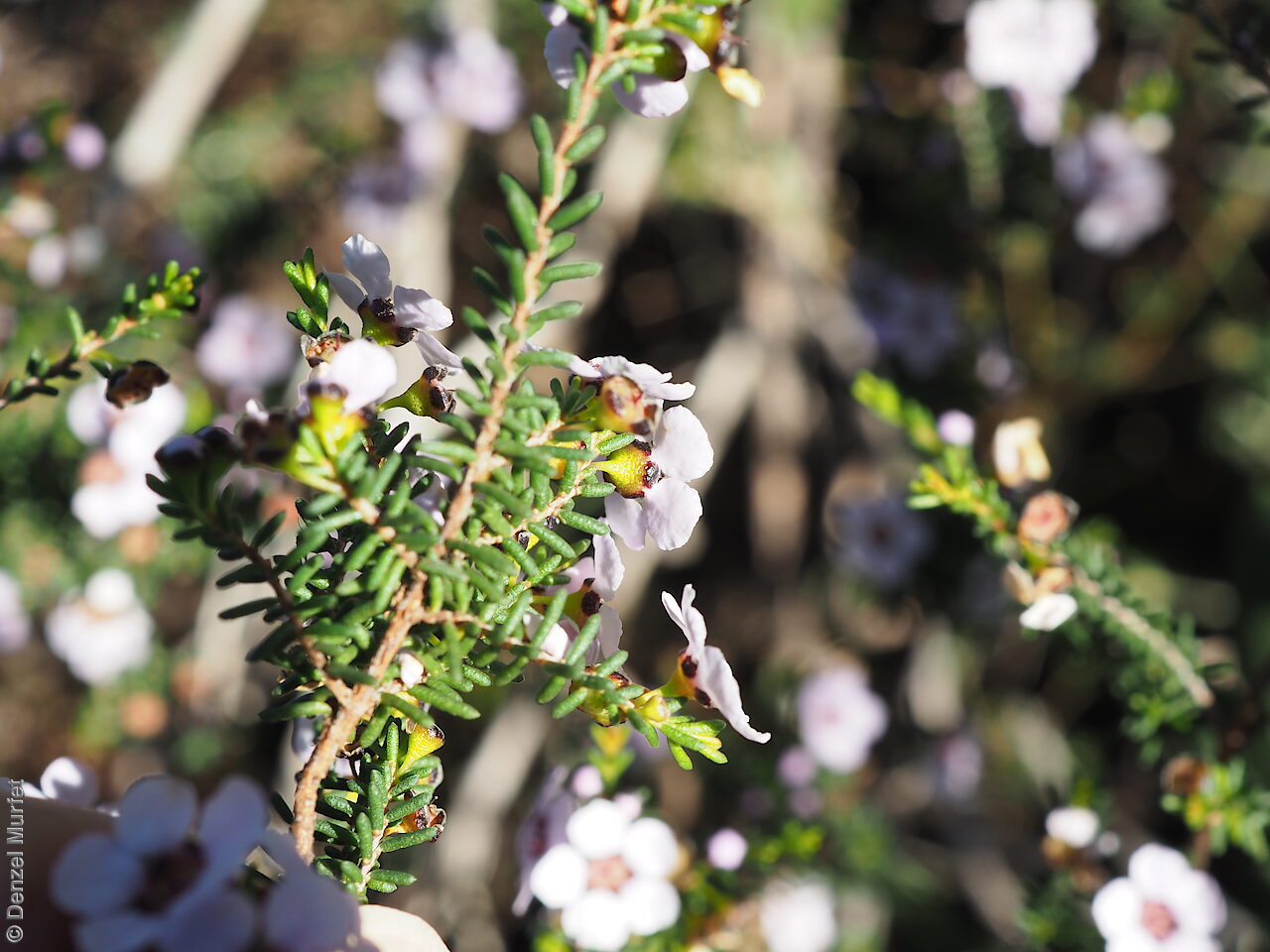
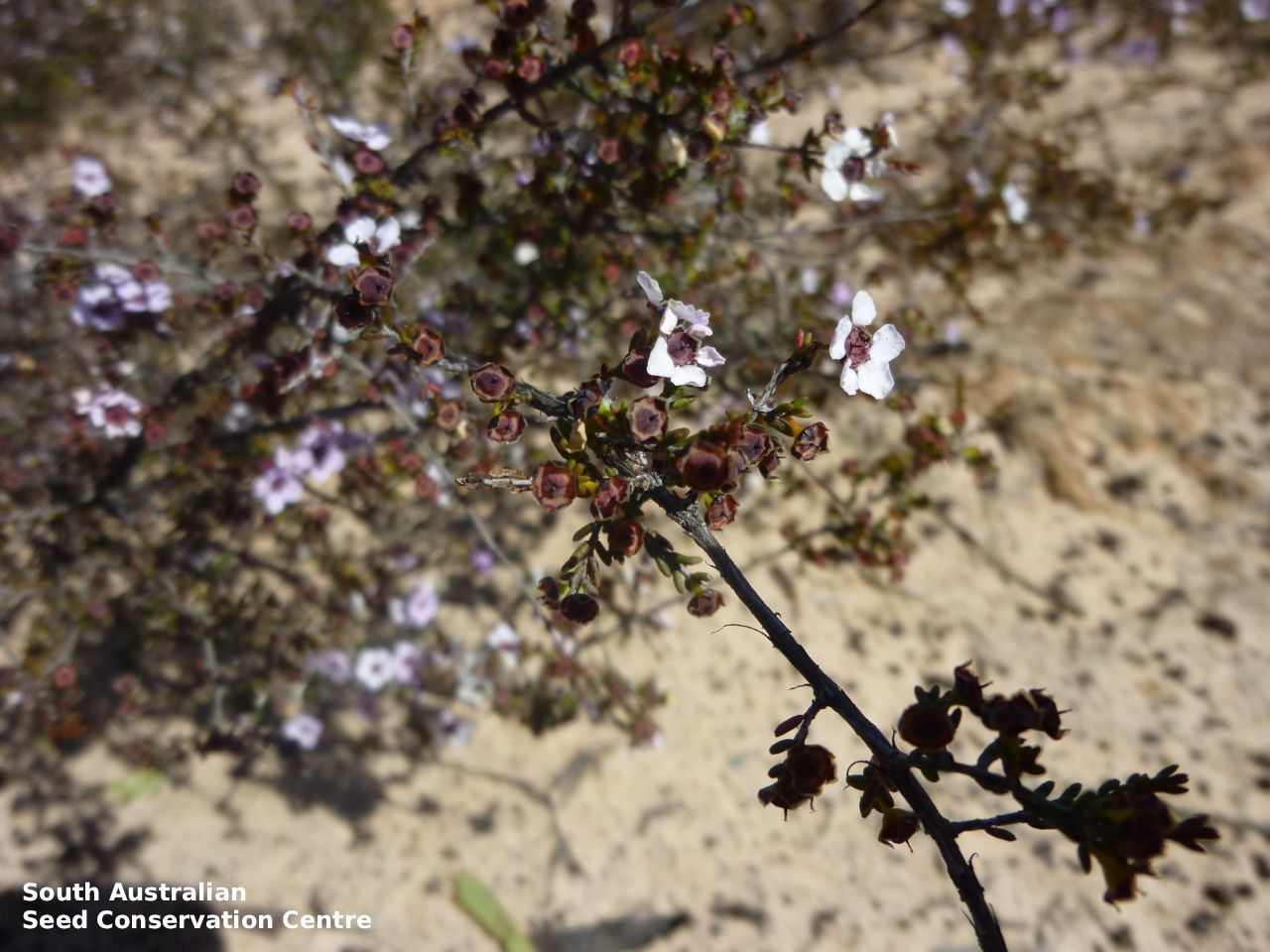
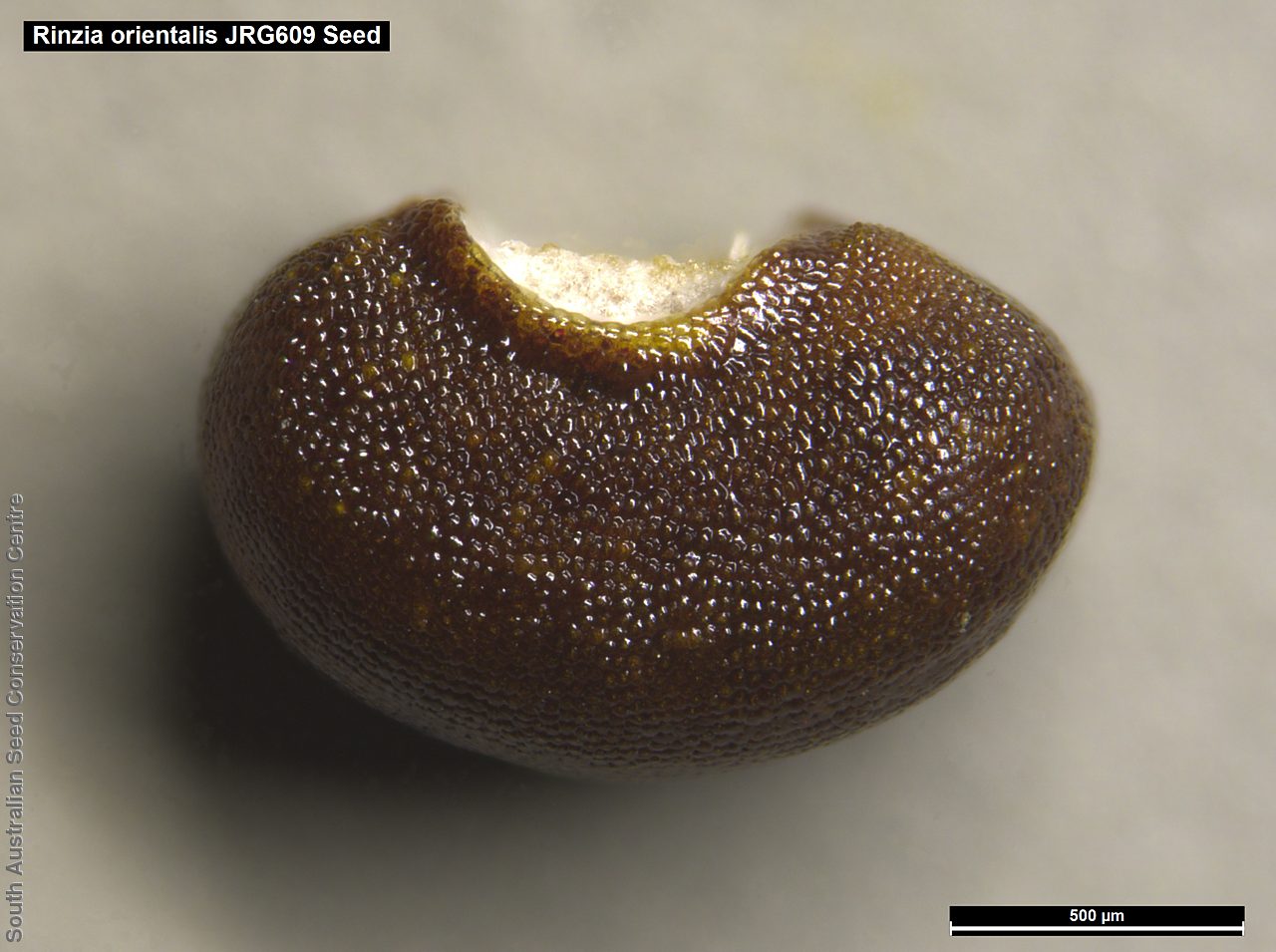
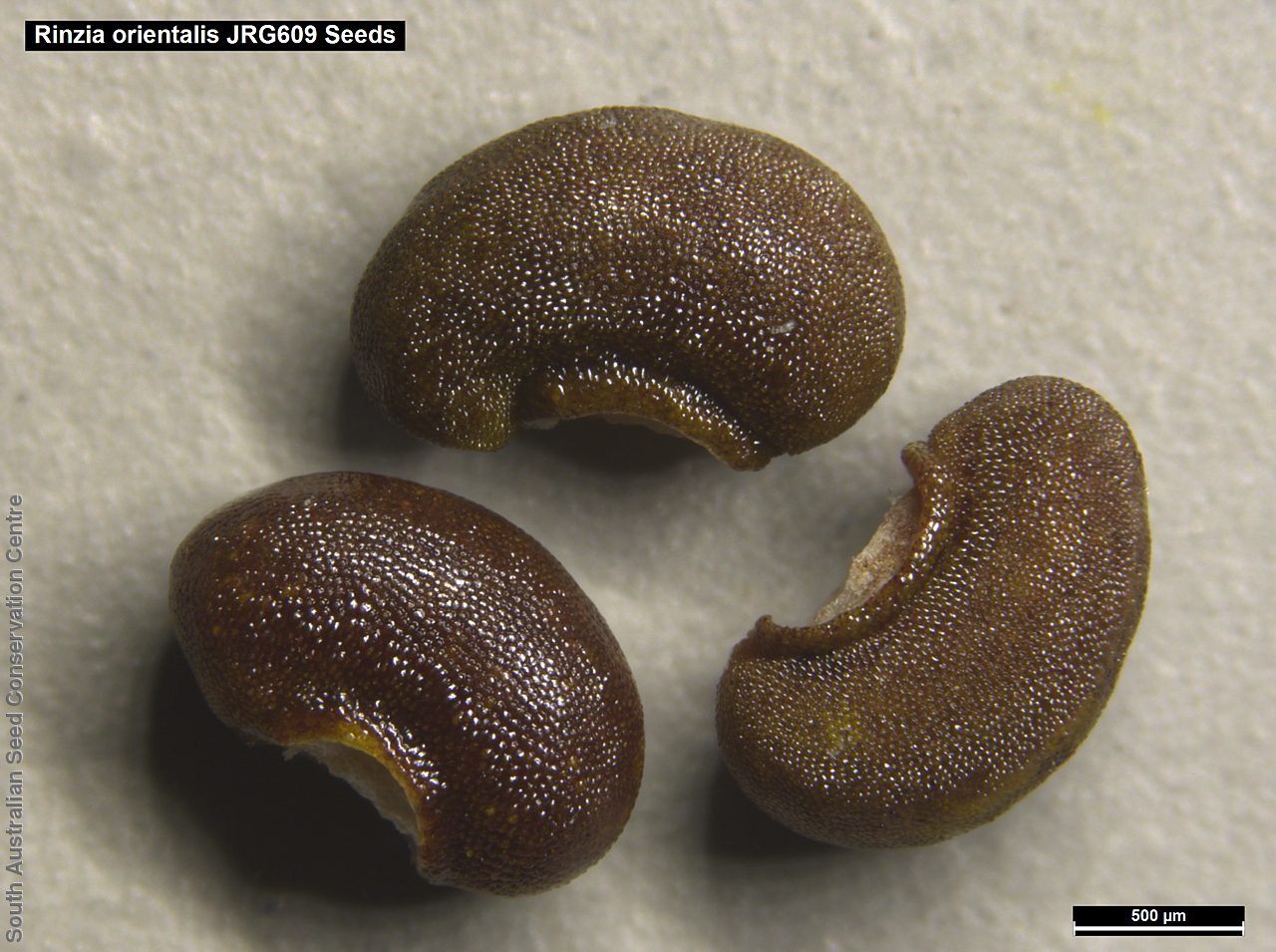
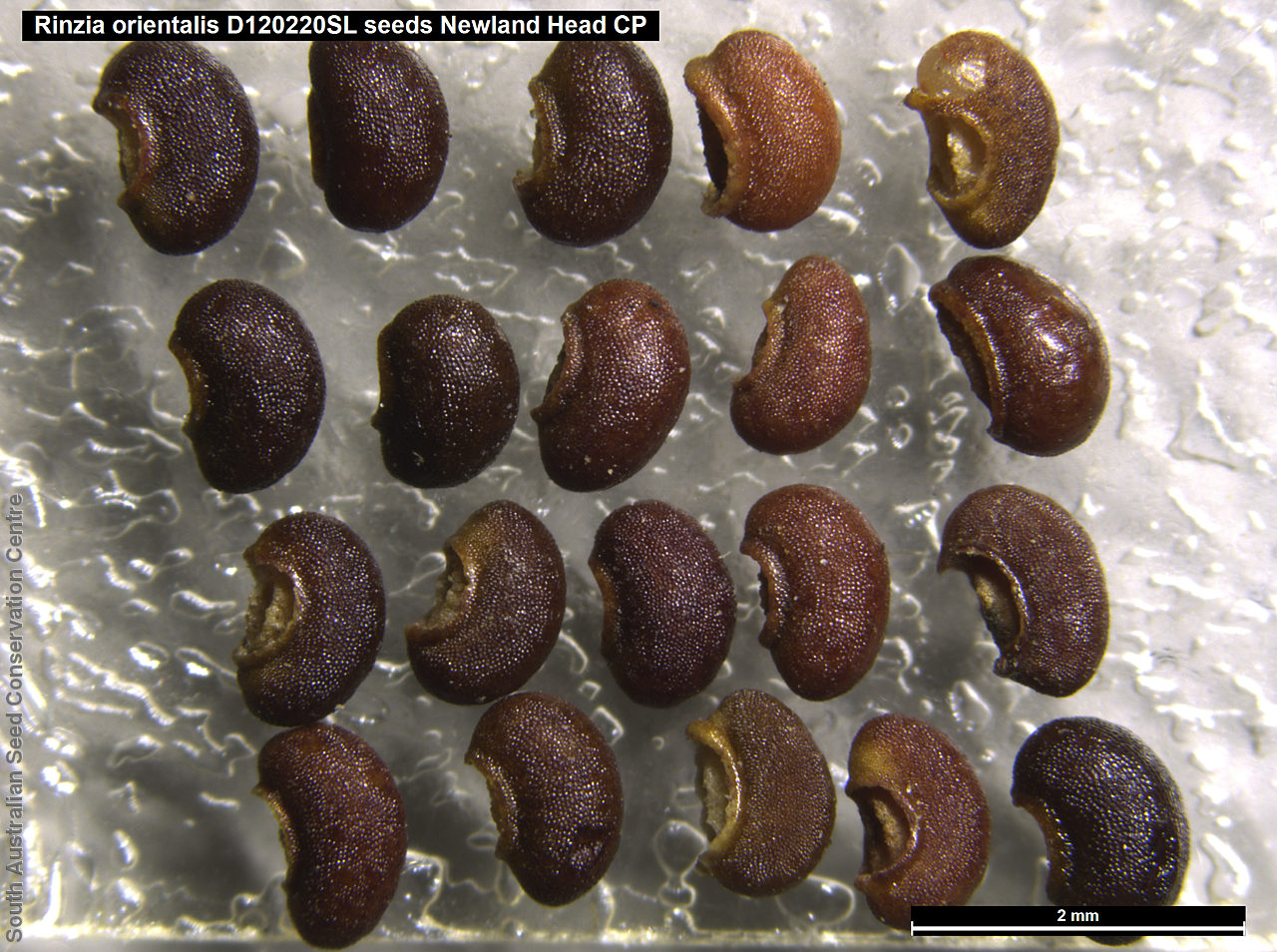
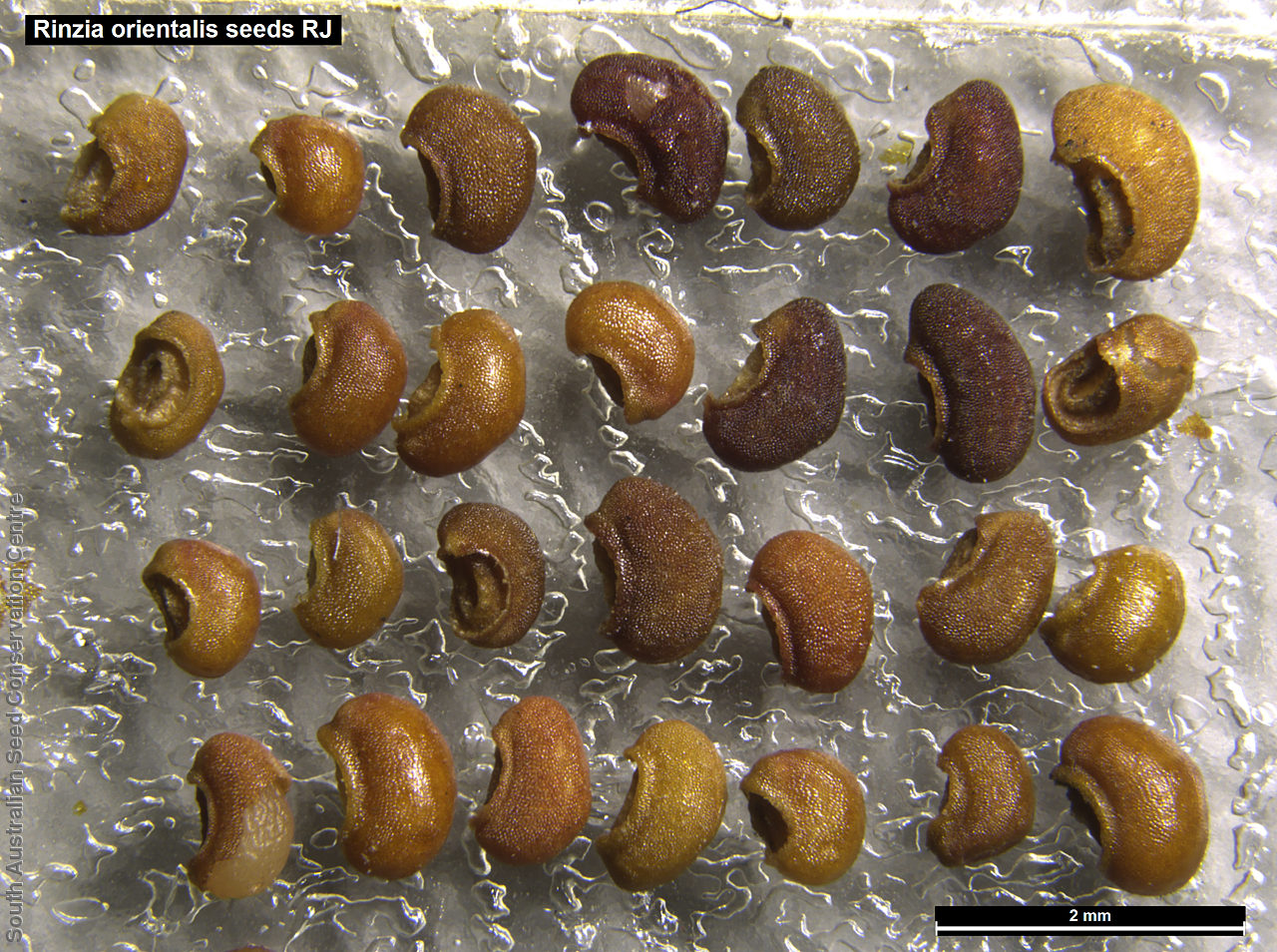
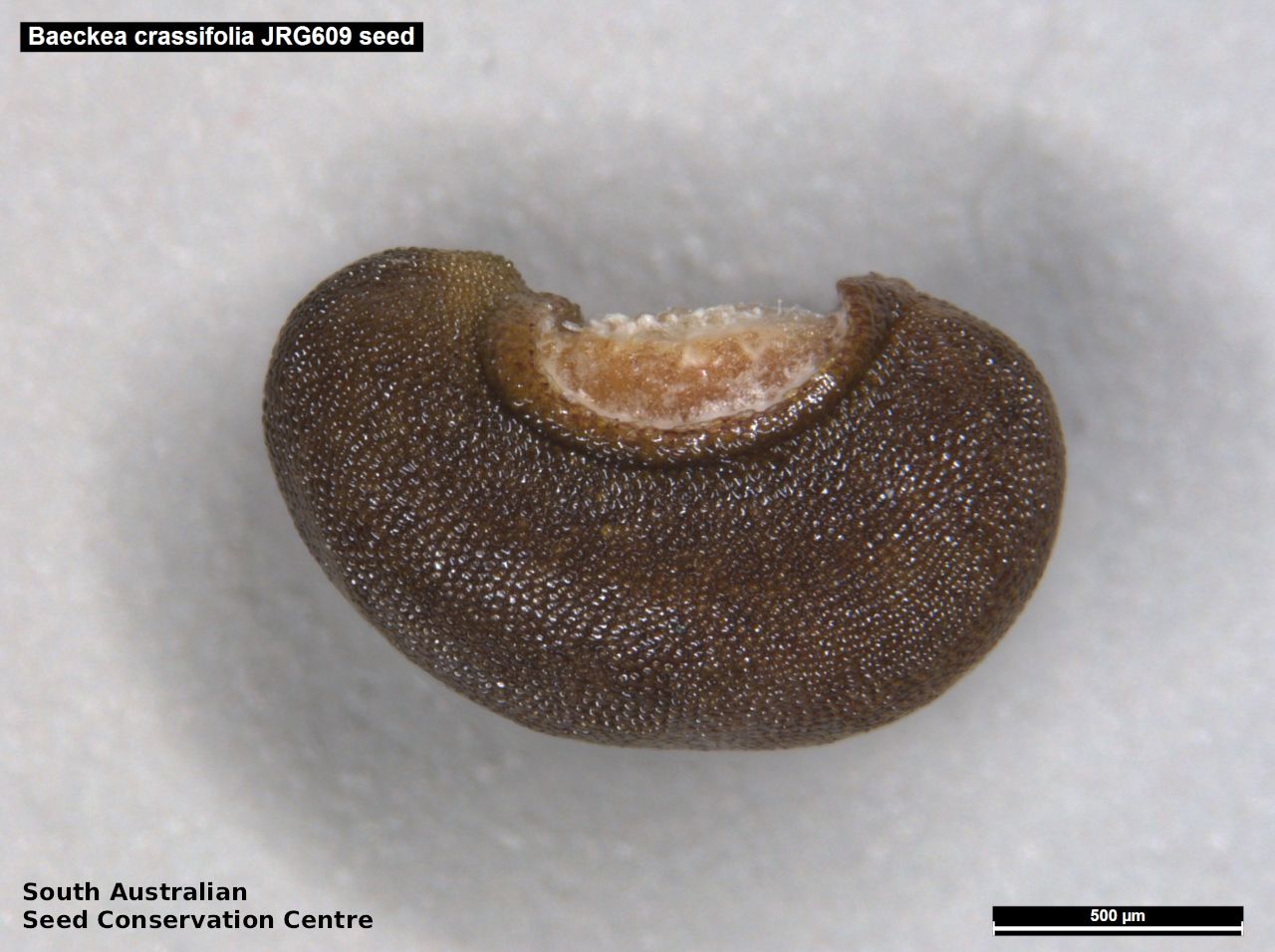

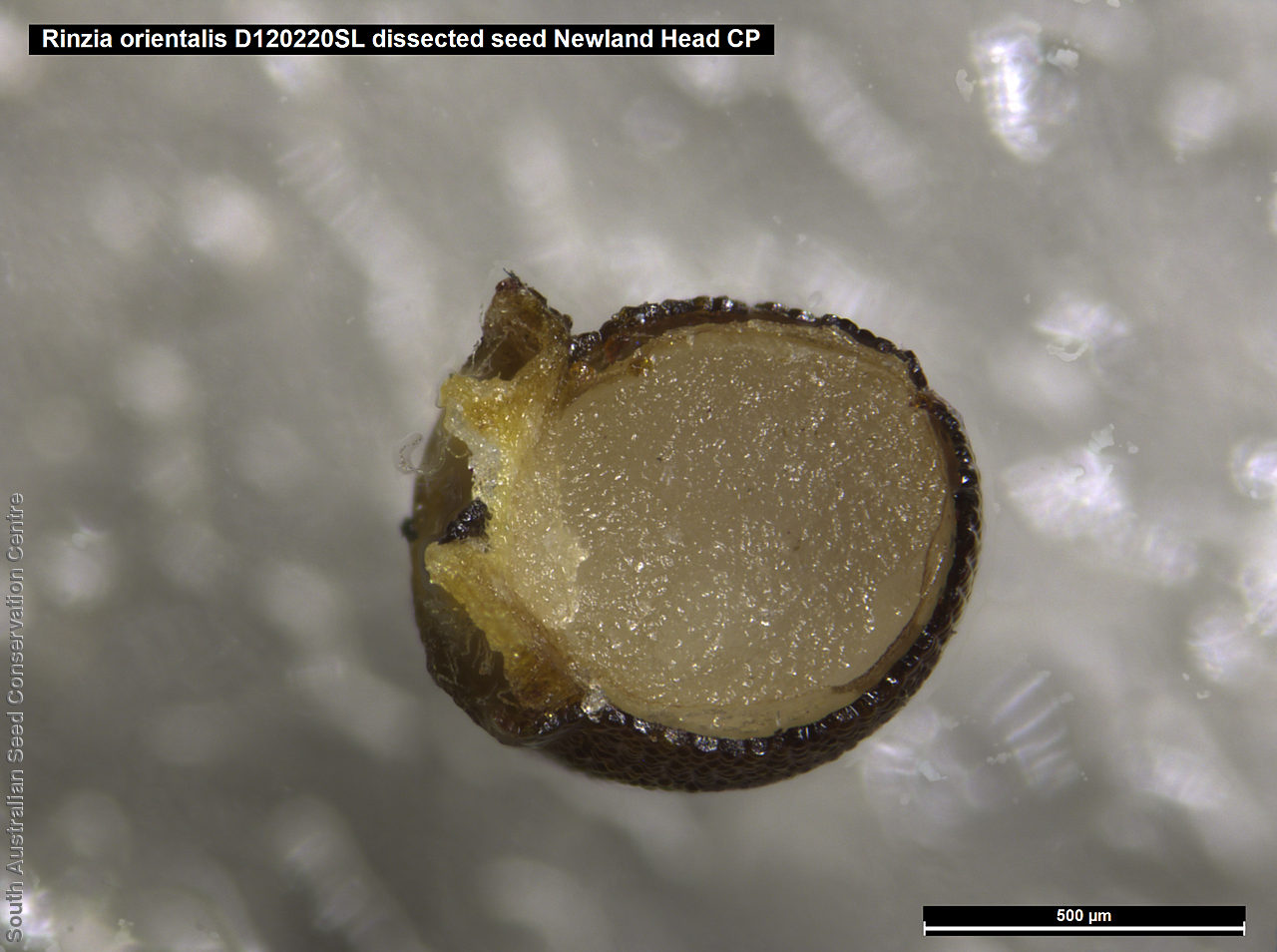

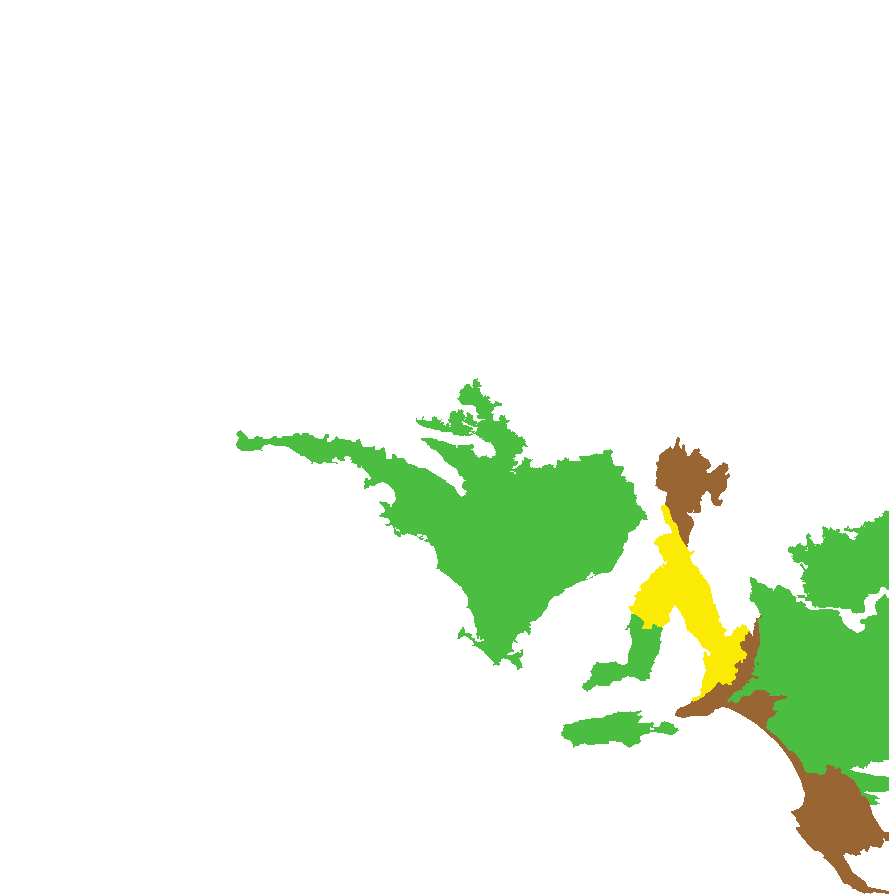
Botanical art
Prior names
Baeckea crassifolia
Baeckea crassifolia var. pentamera
Etymology
Distribution and status
Found in the southern part in South Australia, growing on dunes or sandplains in mallee. Also found in Western Australia, New South Wales and Victoria. Native. Common in South Australia. Uncommon in New South Wales. Common in the other States.
Herbarium regions: Flinders Ranges, Eyre Peninsula, Northern Lofty, Murray, Yorke Peninsula, Southern Lofty, Kangaroo Island, South Eastern
NRM regions: Adelaide and Mount Lofty Ranges, Eyre Peninsula, Kangaroo Island, Northern and Yorke, South Australian Murray-Darling Basin, South East
AVH map: SA distribution map (external link)
Plant description
Erect shrub to 75 cm high. Leaves appressed to slightly spreading against the stem, linear to narrowly obovate, to 5 mm long and 1 mm wide, fat, apex obtuse. Flowers solitary in axils, white or pink to pale violet, to 8 mm across. Flowering between August and November. Fruits are woody fruit to 2 mm diameter, with 3 cells.
Seed collection and propagation
Collect seeds between November and January. Collect mature capsules, those that are turning brown, hard with non-open valves. Maturing fruits need to be observed as most will naturally release their seed. Place the capsules in a tray and leave to dry for a week or two. This allows the valves on the fruit to open and release the seeds. Separate the seeds by placing all the materials into a bucket and shaking it to dislodge the seeds. Pass the material through a sieve to separate the unwanted material. The finer material will contain both seeds and frass usually distinguishable from each other. With finer sieves, the seeds can be separated from the frass but this is not essential for storage or propagation. Store the seeds with a desiccant such as dried silica beads or dry rice, in an air tight container in a cool and dry place.